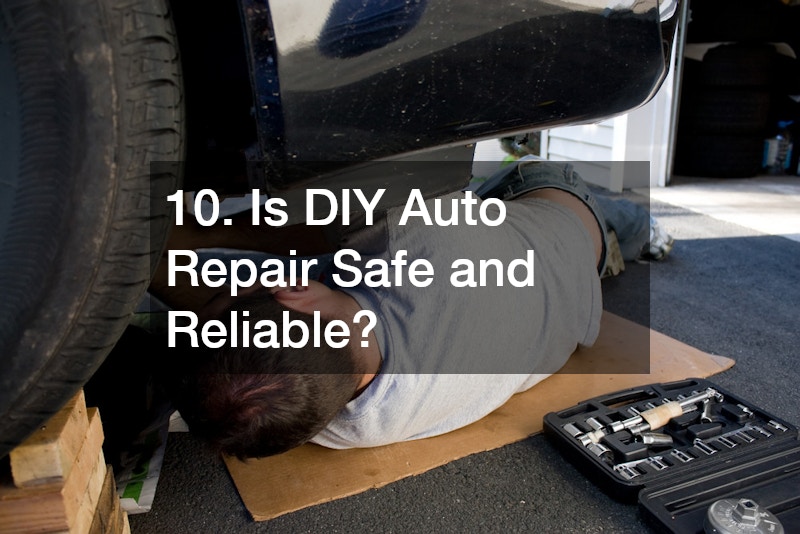In this comprehensive guide, we delve into some of the most essential and broadly applicable auto repair tips every vehicle owner should know. Whether you’re a novice or an experienced driver, understanding these tips will equip you with the knowledge to handle both basic maintenance and unexpected breakdowns. By following these insights, you’ll enhance your vehicle’s longevity and performance, ensuring you’re better prepared for any on-the-road challenges you might encounter.
Proper vehicle maintenance is essential to ensure the safety, reliability, and efficiency of your car, truck, or SUV. Many car issues can be prevented with simple yet effective maintenance routines. Basic tasks like checking fluid levels, rotating tires, and changing the oil at regular intervals not only extend the life of your vehicle but also help it run smoothly. Neglecting these fundamental steps can lead to more significant, costly repairs down the road, leaving you stranded or with a hefty repair bill. As a responsible vehicle owner, staying proactive and informed is the key to preventing many common problems.
In addition to routine maintenance, it’s equally important to know how to handle unexpected breakdowns. Having a basic understanding of common vehicle problems, such as a flat tire, battery failure, or overheating engine, allows you to address these issues promptly. Even if you can’t fix the problem yourself, recognizing the symptoms can help you make better decisions when contacting a mechanic or calling for roadside assistance. For example, understanding the signs of a failing alternator or a low tire can help you avoid being stranded in an unfamiliar location, giving you the peace of mind that comes with knowing what to do in an emergency.
Beyond maintenance and emergency preparedness, this guide will also cover troubleshooting techniques for common problems you may face. From electrical issues to brake system malfunctions, learning the basics of how these systems work will help you communicate more effectively with mechanics, reducing the likelihood of costly misunderstandings or unnecessary repairs.
1. How Often Should I Service My Vehicle?

Regular vehicle servicing is crucial for maintaining the health and performance of your car. The general rule is to follow your vehicle manufacturer’s recommended service schedule. Typically, this means a maintenance check every 10,000 to 15,000 miles, which helps to catch potential issues early.
Beyond the manufacturer’s suggestions, the frequency of auto repair service might vary based on your driving habits and environmental conditions. For example, city driving with lots of stop-and-go traffic can be harder on your vehicle than highway cruising. It’s essential to consider these factors when planning for vehicle repairs to avoid costly breakdowns.
By adhering to a broad auto repair routine, you ensure that elements like the engine, transmission, and brakes remain in top condition. This proactive approach not only preserves vehicle performance but also boosts safety and reliability on the road. Regular servicing can prevent the need for more extensive repairs later on.
2. What Are the Most Common Car Maintenance Tasks?
Many common car maintenance tasks fall under the purview of broad auto repair, such as oil changes, filter replacements, and tire rotations. These tasks ensure your vehicle runs efficiently and reduce the chance of significant issues down the line. It’s advisable to tackle these routinely to avoid unnecessary wear and tear.
Oil changes are vital as they keep the engine lubricated and running smoothly. While you can undertake basic tasks like oil changes by following the manual, professional auto repair service might be necessary for more intricate tasks. Ensuring that the oil and other fluids are at optimal levels will extend the lifespan of your car’s engine.
Tire rotation is another key maintenance task, as it helps to promote even tire wear. Even wear ensures better handling and extends the life of your tires, which is a crucial aspect of vehicle safety. Regular check-ups also prevent the need for tire repair or replacement due to uneven tread wear.
3. Why Is My Check Engine Light On?
The illumination of the check engine light often signals that there’s a problem requiring attention. This could range from a loose gas cap to more serious issues like transmission repairs. Sometimes, it might merely indicate the need for routine maintenance or signal something more serious.
Local auto repair shops often have diagnostic tools that can quickly determine the cause of the check engine light. It’s advisable to take your car into the shop as soon as possible to avoid extensive damage. By being proactive and addressing issues when they arise, you can prevent the need for more costly repairs.
Ignoring a check engine light, even if the vehicle seems to be running fine, can lead to significant vehicle repairs. This oversight can damage critical components and potentially lead to breakdowns. It’s wise to err on the side of caution and have a professional assess any issues promptly.
4. How Can I Improve My Vehicle’s Fuel Efficiency?

Improving a vehicle’s fuel efficiency not only saves money but also benefits the environment. One of the best broad auto repair methods is ensuring your tires are properly inflated, as low tire pressure can increase fuel consumption. Regularly checking tire pressure is a straightforward way to ensure better fuel economy.
Moreover, regular maintenance such as changing air filters, monitoring tire alignment, and ensuring the engine runs smoothly contributes to improved fuel efficiency. Luxury auto repair often involves optimizing these elements to enhance vehicle performance. Taking care of your vehicle in these ways keeps it running efficiently and consuming fuel at an optimal rate.
Driving habits also greatly influence fuel efficiency. Avoiding excessive idling and driving at a steady speed can lead to better fuel consumption. Simple adjustments in driving style can have significant impacts on the overall efficiency and performance of your vehicle.
5. How Do I Change a Flat Tire?
Learning to change a flat tire is an essential skill for all drivers. With a few tools like a jack, a wrench, and a spare tire, you can quickly address this roadside emergency. Having the knowledge and equipment ready can help minimize stress and delay.
In any case, it’s important to know how to locate the spare tire and the vehicle’s jack point, as outlined in your owner’s manual. If a flat tire occurs in an unsafe location, contacting collision repair services or roadside assistance can be prudent. Dealing with such situations effectively can prevent further damage, such as rim deformation, which might require tire repair.
Broad auto repair knowledge empowers you to handle flat tires safely and efficiently. Remembering to regularly check the condition of your spare tire and the tools ensures that you’re not caught off guard. Moreover, routine maintenance checks can sometimes preempt tire issues altogether.
6. What Should I Do in Case of a Car Overheating?
Overheating can be a significant issue, leading to serious damage such as blown head gaskets or warped heads. The first step is to safely pull over and turn off your vehicle to prevent further damage. Allowing your engine to cool is critical before attempting any actions.
Once the vehicle cools down, checking the coolant level is crucial. Low coolant is often the cause of overheating and can be resolved by filling it up according to vehicle specifications. In cases where this isn’t the solution, professional diagnosis from an auto repair service may be needed.
Sometimes, indicators of a failing water pump or radiator might cause overheating. Transmission repairs could also be a contributing factor if fluids aren’t managed correctly. It’s essential to monitor engine temperature and respond promptly to signs of overheating to ensure your vehicle remains in good running condition.
7. How Do I Jump-Start a Car Battery?

Jump-starting a car battery is a skill every vehicle owner should possess. To jump-start a battery, you’ll need jumper cables and a working car with a fully charged battery. Connect the cables correctly: positive to positive and negative to negative, ensuring the clamps are secured.
It’s essential to make sure that the cars do not touch each other while the cables are connected. This prevents short circuits and potential further damage. Hail dent repairs or incidental contact can introduce complications under the hood, emphasizing the need for careful handling.
After a successful jump-start, let your vehicle run for a few minutes before disconnecting the cables. This process recharges your battery but doesn’t substitute for checking the battery health to prevent future instances. If issues persist, a local auto repair shop can assist in diagnosing and fixing potential problems.
8. What Are Signs of Brake Problems?
Recognizing brake issues is vital for vehicle safety. Often, unusual noises like squealing or grinding alert drivers to potential problems. These sounds usually indicate worn brake pads or other issues that require immediate attention.
A loss of brake responsiveness or a spongy feeling when pressing the pedal emphasizes the need for urgent action. Addressing such problems through broad auto repair prevents more severe issues like complete brake failure. Delayed response can lead to costly auto engine repair or even dangerous driving conditions.
Routine brake inspections during basic vehicle maintenance reduce the chance of encountering significant issues. Detecting problems early through regular auto repair service helps maintain safety and reduces the need for more substantial vehicle repairs later on. Prevention is always better than addressing major malfunctions.
9. How Do I Deal with Misaligned Wheels?
Wheel misalignment is a common issue that affects vehicle handling and tire longevity. Common symptoms include uneven tire wear, steering pulling to one side, or a vibrating steering wheel. These signs indicate a need for immediate attention to regain optimal vehicle performance.
Routine tire alignment checks, especially after hitting a curb or pothole, ensure that wheels are properly aligned. Tire repair might be needed if the misalignment has worn your tires unevenly, which can lead to further issues if left unaddressed.
Broad auto repair includes regularly checking wheel alignment as part of maintaining vehicle efficiency. Keeping your wheels correctly aligned not only improves driving comfort but also optimizes fuel efficiency and tire lifespan. Proper alignment services are essential for preventive maintenance.
10. Is DIY Auto Repair Safe and Reliable?

DIY auto repair can be both cost-effective and rewarding, provided that you understand your vehicle’s mechanics and limitations. Simple tasks like oil changes, air filter replacements, and checking fluid levels can easily be managed by most car owners. However, more complex tasks might require professional expertise to avoid costly mistakes.
When venturing into more complex areas, such as exhaust repair or transmission work, it’s crucial to have the right tools and knowledge. Using inaccurate techniques can lead to significant problems or even void your vehicle warranty. When in doubt, seeking advice from a local auto repair professional ensures safe handling of your vehicle repairs.
Ultimately, broad auto repair encompasses knowing when to handle tasks personally and when to reach out for professional help. Balancing DIY efforts with professional services maintains the car’s integrity and safety on the road. With proper knowledge and care, you can effectively manage a blend of DIY and professional auto repair service for optimum results.
Using These Broad Auto Repair Tips
Understanding these broad auto repair tips equips vehicle owners with the knowledge to keep their cars running smoothly and to identify when professional assistance is needed. Armed with this information, you’re not only enhancing the longevity and performance of your vehicle but also ensuring your safety on the road. Incorporating routine maintenance and responding quickly to issues can significantly impact your vehicle’s reliability and efficiency.
By addressing common issues promptly through local auto repair or expert intervention, you can prevent more significant problems. The integration of preventive maintenance into your auto care routine further enhances your car’s lifespan. Always remember, when DIY options seem limited, the guidance of a skilled mechanic can vitalize your driving experience safely.
Your vehicle is an essential aspect of your daily life, and with proper care and maintenance, it can serve you faithfully for many years. With a commitment to regular check-ups and recognizing problem signs, you maintain control over your vehicle’s health. Equip yourself with these tips, empower your ownership experience, and enjoy a smooth, worry-free journey.
